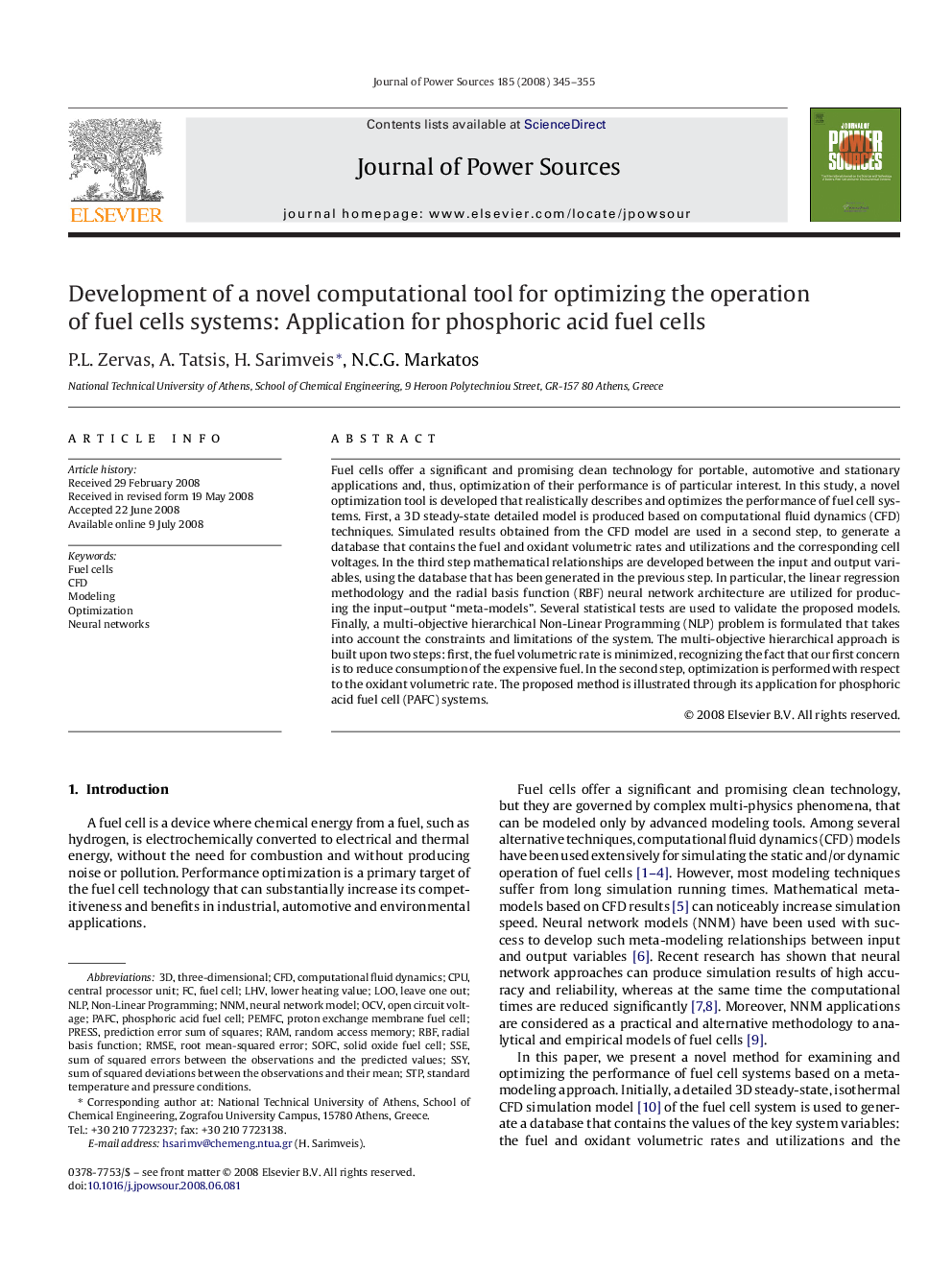| Article ID | Journal | Published Year | Pages | File Type |
|---|---|---|---|---|
| 1294420 | Journal of Power Sources | 2008 | 11 Pages |
Fuel cells offer a significant and promising clean technology for portable, automotive and stationary applications and, thus, optimization of their performance is of particular interest. In this study, a novel optimization tool is developed that realistically describes and optimizes the performance of fuel cell systems. First, a 3D steady-state detailed model is produced based on computational fluid dynamics (CFD) techniques. Simulated results obtained from the CFD model are used in a second step, to generate a database that contains the fuel and oxidant volumetric rates and utilizations and the corresponding cell voltages. In the third step mathematical relationships are developed between the input and output variables, using the database that has been generated in the previous step. In particular, the linear regression methodology and the radial basis function (RBF) neural network architecture are utilized for producing the input–output “meta-models”. Several statistical tests are used to validate the proposed models. Finally, a multi-objective hierarchical Non-Linear Programming (NLP) problem is formulated that takes into account the constraints and limitations of the system. The multi-objective hierarchical approach is built upon two steps: first, the fuel volumetric rate is minimized, recognizing the fact that our first concern is to reduce consumption of the expensive fuel. In the second step, optimization is performed with respect to the oxidant volumetric rate. The proposed method is illustrated through its application for phosphoric acid fuel cell (PAFC) systems.
